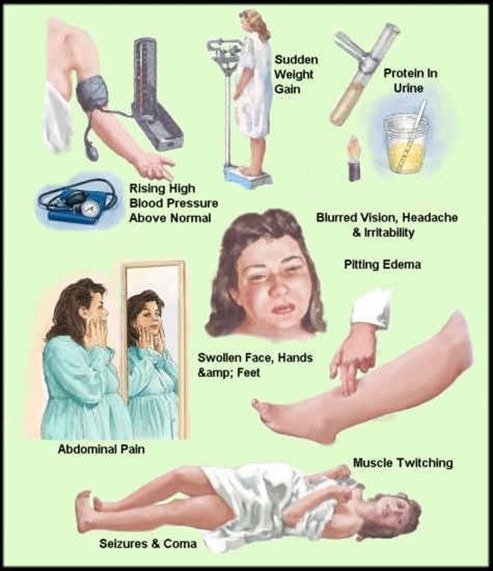A nurse is providing teaching to an older adult client who has a seizure disorder and a new prescription for phenytoin. Which of the following instructions should the nurse include?
"Plan to take this medication with food."
"Plan to take this medication with antacids."
"Limit foods that contain vitamin D while taking this medication."
"Limit foods that contain folic acid while taking this medication."
The Correct Answer is A
Choice A reason:
"Plan to take this medication with food." Is the correct statement. When providing instructions to an older adult client who has a seizure disorder and is prescribed phenytoin (an antiepileptic or anticonvulsant medication), the nurse should advise the client to take the medication with food. Phenytoin can cause gastrointestinal irritation, and taking it with food can help minimize this side effect.
Choice B reason:
"Plan to take this medication with antacids. “is not the appropriate instruction. Phenytoin should not be taken with antacids. Antacids can reduce the absorption of phenytoin, leading to decreased effectiveness of the medication. If antacids are needed for other reasons, they should be taken at least 2 hours before or after taking phenytoin.
Choice C reason:
"Limit foods that contain vitamin D while taking this medication. “This is not inappropriate instruction. There is no specific requirement to limit foods containing vitamin D while taking phenytoin. However, phenytoin may decrease the absorption of vitamin D, which could potentially affect the client's vitamin D levels. Therefore, it is essential for the client to have regular check-ups and possibly discuss the need for vitamin D supplementation with their healthcare provider.
Choice D reason:
"Limit foods that contain folic acid while taking this medication. “This is not the correct statement. Phenytoin can interfere with the absorption of folic acid (a B-vitamin). Long-term use of phenytoin may lead to folic acid deficiency. Therefore, the nurse should instruct the client to consume foods rich in folic acid and discuss the potential need for folic acid supplementation with their healthcare provider.
Nursing Test Bank
Naxlex Comprehensive Predictor Exams
Related Questions
Correct Answer is B
Explanation
The correct answer is choiceb. Waits for 2 min between suctions.
Choice A rationale:
Inserting the catheter without applying suction is correct. Suction should only be applied while withdrawing the catheter to prevent trauma to the tracheal mucosa.
Choice B rationale:
Waiting for 2 minutes between suctions is too long.The appropriate wait time is generally around 20-30 seconds to 1 minute between suction attempts to prevent hypoxia and allow the patient to recover.
Choice C rationale:
Applying suction for 15 seconds is within the recommended duration.Suctioning should not exceed 15 seconds to avoid causing hypoxia and trauma to the tracheal mucosa.
Choice D rationale:
Encouraging the client to cough during suctioning is appropriate.Coughing helps to mobilize secretions and can make suctioning more effective.
Correct Answer is C
Explanation
This is a sign of preeclampsia, a serious complication of pregnancy that can cause high blood pressure, proteinuria, and seizures.

Preeclampsia can affect the placenta, the kidneys, the liver, and the brain of the mother and the fetus. It requires immediate medical attention and may lead to early delivery.
Choice A, bleeding gums, is wrong because it is a common occurrence during pregnancy due to hormonal changes that increase blood flow to the gums. It is not a cause for concern unless it is excessive or accompanied by other symptoms.
Choice B, urinary frequency, is wrong because it is also a normal finding during pregnancy due to the growing uterus putting pressure on the bladder. It is not a sign of infection or kidney problems unless it is associated with pain, burning, or blood in the urine.
Choice D, faintness upon rising, is wrong because it is usually caused by orthostatic hypotension, a drop in blood pressure when changing positions.
This can happen during pregnancy due to the dilation of blood vessels and the increased blood volume. It can be prevented by rising slowly, drinking enough fluids, and avoiding prolonged standing.
Whether you are a student looking to ace your exams or a practicing nurse seeking to enhance your expertise , our nursing education contents will empower you with the confidence and competence to make a difference in the lives of patients and become a respected leader in the healthcare field.
Visit Naxlex, invest in your future and unlock endless possibilities with our unparalleled nursing education contents today
Report Wrong Answer on the Current Question
Do you disagree with the answer? If yes, what is your expected answer? Explain.
Kindly be descriptive with the issue you are facing.
